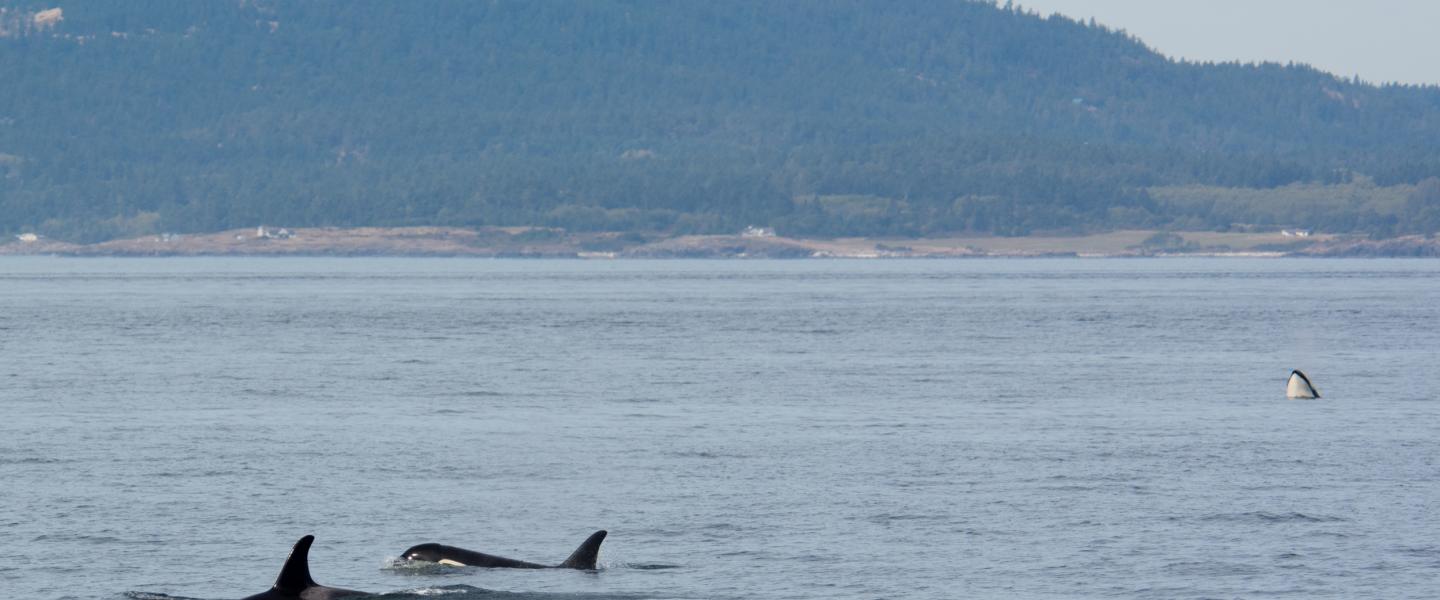
[Naturalist Sarah – 09/22/2017 – M/V Sea Lion – 12:00pm]
September, September, September! There is a reason that this month is a staff favorite out on the water. Today was just another day that puts a smile on your face that stays through dinner. This afternoon we had a delightful encounter with members of our Southern Resident killer whales.
Today Captain Gabe, Naturalist Courtney, and I departed Friday Harbor with a boatful of curious and excited guests! Right off the bat, as we turned right and headed south out of the harbor, we got some excellent questions! It is always so nice to have engaged guests on board, as naturalists we really appreciate chatting with guests and talking about what passengers want to talk about!
San Juan Channel Wildlife
As we cruised through San Juan Channel we caught glimpses of harbor seals and some beautiful seabirds. Perhaps the highlight of the transit through San Juan Channel was a few groups of harbor porpoise cruising through the glassy waters. These small cetaceans are some of our most common marine mammals here in the Salish Sea. The main difference between porpoises and a dolphins is in their dentition, or tooth structure. Porpoises have flat, spade-shaped teeth, or spatulate dentition, while dolphins have teeth with round bases, resulting in conical dentition. At the southern end of San Juan Channel we found a gathering of Steller’s sea lions up on whales rocks, before heading out into the open straits.
Southern Resident Killer Whales – L12 Matriline!
As we cruised out into Haro Strait we soon found ourselves surrounded by tall, black dorsal fins and blows: Southern Resident Killer Whales! We were lucky to be watching members of the L12 matriline spread out, fishing, and frolicking at the south end of San Juan Island. We were treated to extraordinary social behavior from the orcas, especially from the cousins, eight-year-old L113 “Cousteau” and five-year-old L119 “Joy.” These two juveniles exuberantly played like elementary-schoolers as we watched on. Close by, L94 “Calypso,” mother of L113 and two-year-old L121 “Windsong,” played babysitter to L119 for her sister L77 “Matia.” L94 and L121 lazily played and foraged as the older juveniles roughhoused. We were lucky enough to get an unusually close pass after the whales turned towards the boat after a long dive. As per federal law, we cut the engines and allowed the whales to pass.
After the whales passed the M/V Sea Lion, L77 met up with her sister and relieved her of childcare duties. The juveniles continued to play, much to our glee, starting to breach and become more surface active. We also got close looks at L85 “Mystery” and, at a distance, L41 “Mega” and L25 “Ocean Sun.” It was an amazing day spent in the presence of some incredible animals.
Minke whales Lunge-feeding
On the way back towards San Juan Island we stopped to check out a group of feeding minke whales and the beautiful bait ball that the whales were feeding off of. Minke whales, unlike toothed whales, have baleen in their mouths. This makes them filter feeders. Usually these small whales (Still over 30 feet long!) are going to eat small forage fish in large mouthfuls. Today, we were lucky enough to see one of the whales lunge at the surface with its mouth wide open! We even caught a glimpse of the whale’s baleen plates!
Please enjoy some photos from today’s tour!
See all 12 photos